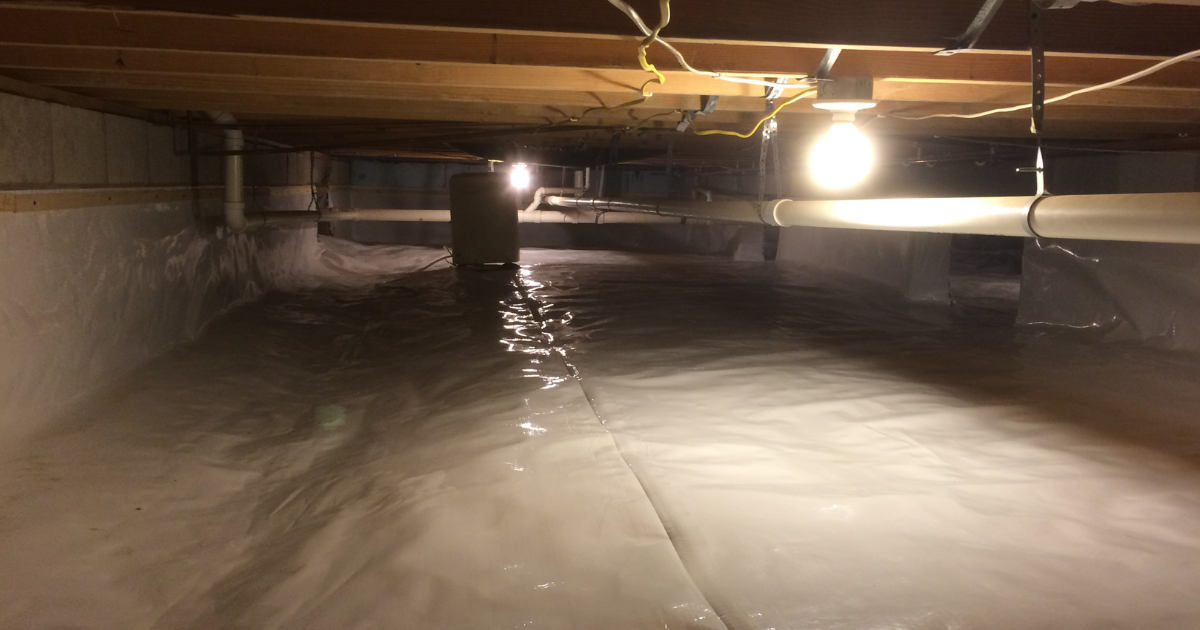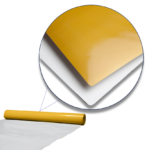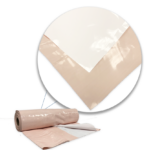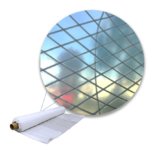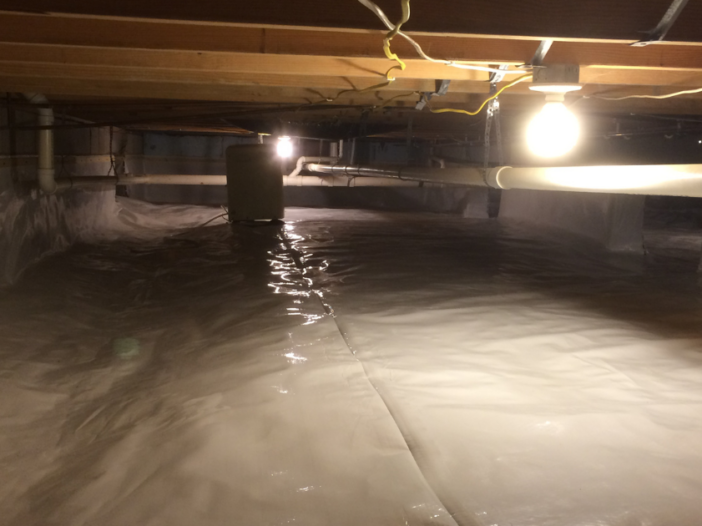
After installing a crawl space vapor barrier, it’s possible that you might smell new or perhaps off-putting odors. It may lead you to think: do vapor barriers cause odor? In this article, we shine light on this commonly asked question by describing what vapor barriers are, why odors may be present after installing a vapor barrier, and what you can do to address the problem.
What are Vapor Barriers?
A vapor barrier is high-performance plastic sheeting specifically designed to ensure low permeability and protect against moisture vapor damage entering a space. The highest quality vapor barriers are standard 6-mil thickness polyethylene plastic sheeting, must meet ASTM requirements, must be class A and maintain a 0.1 permeability or less, and must be puncture resistant.
Vapor barriers – which are used for crawl space encapsulation, in walls and ceilings, and under concrete slabs – help eliminate excessive moisture build-up that causes structural damage, including:
- A breakdown of flooring adhesion
- Warping or peeling
- Rotting of carpet
- Buckling and decaying of wood
- Fungi growth or offensive odors
Do Vapor Barriers Cause Odor?
If a crawl space vapor barrier is made from recycled matter, it’s possible that it could contain chemicals or contaminants that may cause off-gassing, but that is not the case with vapor barriers made from virgin resin?
It’s not uncommon for some to claim the nylon string encased within a vapor barrier emits odor, but not in the string-reinforced plastic sheeting we offer, since the scrim is also made without contaminants. Typically, when you smell an odor after the installation of a proper crawl space vapor barrier, it is often the result of:
- Decomposing plant materials in a moisture-rich ground can emit the smell of ammonia or a more familiar scent such as “cat pee”. The best fix to eliminate stinky soil gasses is to install a mitigation system to redirect the gas and prevent build up.
- Improper cleaning and excavation of the crawl space before installing an encapsulation system. It’s important to get rid of any debris or dead rodent/animal carcasses beforehand.
- Trapped vapor-barrier odors could also be caused by lack of air movement. Having proper ventilation can address that problem, as well as the use of a dehumidifier.
- Premature degradation of cheap barrier materials, because even without exposure to the sun, possible contaminants may also cause odors.
Americover is Your Source for Class A Vapor Barriers
We understand that maintaining an airtight seal is crucial for a crawl space encapsulation system’s effectiveness. You want to ensure that no radon or moisture can sneak into your crawl space. Redirecting all gasses outside through the mitigation system is the key to keeping your home safe and your indoor air quality at an optimal level.
VaporBlock® Plus Vapor Barrier is a high-performance under-slab vapor barrier designed specifically to retard moisture and radon migration through concrete slabs on-grade while exceeding ASTM E-1745 Class A, B, and C requirements. Learn more about this premium vapor barrier.
Pro Crawl Anti-Mold Vapor Barrier with MPT™ is a class 1 vapor barrier that passes ASTM E1745 class A, B, & C. Its perm rating blocks more vapor transmission than the leading competitor’s 10 mil vapor barrier with a permeance of only .022.
Vapor Barrier Yellow sheeting is composed of polyolefin resins to create a puncture-resistant vapor barrier for use under concrete slabs to stop moisture migration and reduce mold, mildew, and fungus.
Dura-Skrim® is a string reinforced plastic sheeting that has four layers of high strength polyethylene film to increase puncture resistance and a layer of polyester scrim to resist tearing. Available in 8 mil to 20 mil.
Reliable Vapor Barrier Plastic Sheeting with Americover
If you are a builder or homeowner looking to install a vapor barrier, rely on the leading expertise of Americover to provide you with top-quality vapor barriers. Give us a call at 833-261-6501 or start an online chat today to discuss the best solution for your construction project.

